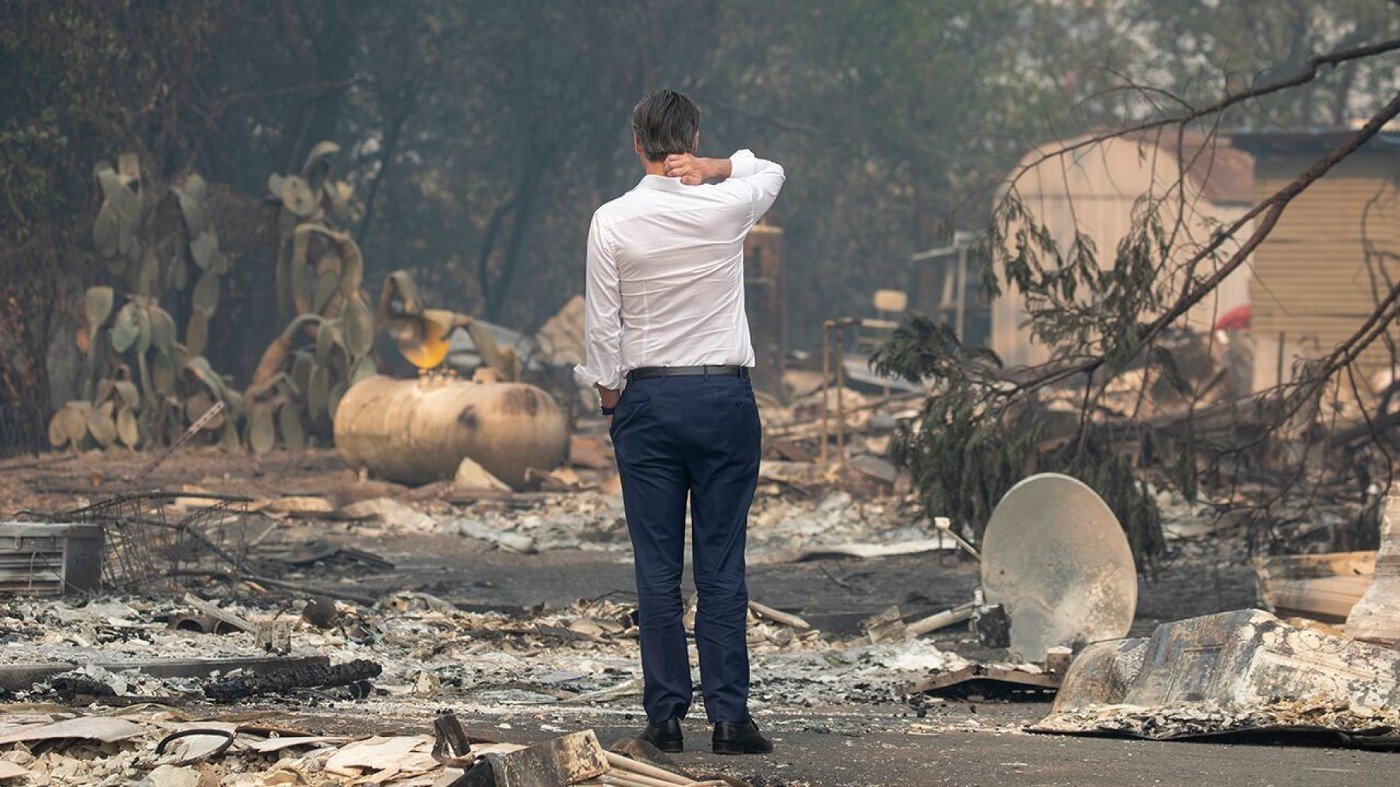Governor Newsom At History’s Edge
Photo Credit: Karl Mondon/MediaNews Group/The Mercury News via Getty Images
By Andrew Sullivan
“No one cares who’s to blame, they want to know what the hell we’re going to do,” said Governor Gavin Newsom late last month, addressing wildfires and public safety power shutoffs. “And you know the person accountable for doing that? The person that took the oath of office nine months ago.”
If this were an attempt to channel Harry Truman’s “the buck stops with me,” message, call it a near miss. The Governor says he owns the problem, but in the same breath reminds us he’s only been in charge for a minute. The unspoken takeaway: don’t blame him for problems long in the making.
Californians deserve more from the Governor than a carefully tuned message, a public spat with the President or hints at a government takeover of PG&E. Californians deserve a vision for the state’s future that includes uninterrupted electricity and gas and progress against a spiraling, statewide fire problem.
From the outside, that doesn’t sound like too much to ask. But make no mistake, accomplishing these goals would be an enormously complex and expensive task.
The debate over burying power lines is a good example. Since so many recent fires have originated with PG&E electrical equipment, it’s natural to think putting the company’s lines underground is a smart policy response. Advocates note utilities have been burying lines in Australia for a decade already.
According to PG&E, however, burying power lines would cost $2.3 million per mile. With 81,000 miles of overhead wires — and that’s PG&E’s portion alone — we’re looking at $186 billion, a sum that’s significantly greater than the entire state’s annual budget. Further, underground lines are not immune to natural disaster, especially floods and earthquakes. And they can take twice as long to repair as overhead lines.
Other ideas, like public control of PG&E, converting to micro-grids or implementing more controlled burns, present similar complexities.
The point isn’t that Governor Newsom (or his newly appointed energy czar) must have the answers today. The point is that the Governor alone can activate the full force of the state’s resources. If California is not livable, then nothing else matters. Newsom may only be nine months into his term, but the moment has come for him to re-orient his agenda around the state’s wildfire and energy crisis.
Data suggests the public would reward him for such a move. Even before this fall’s fires and power outages, 60 percent of Californians worried a family member will experience injury or property damage or that a disaster will result in a major disruption of household routine.
We’re at an historic moment, but historic moments haven’t fazed Gavin Newsom in the past. It’s hard to miss the parallel between the energy and fire crisis with same-sex marriage in 2004, when San Francisco Mayor Newsom put himself at the edge of a national civil rights movement.
He’s on a bigger stage now, and the opportunity is clear: energy and climate disasters are urgent and potentially existential to Californians, but they are also critical to Americans everywhere. If Governor Newsom can solve these complex, interwoven crises in California, he stands to contribute to progress across the country.
Remember this: Gavin Newsom had been mayor for one month when he issued the first marriage licenses to same-sex couples in American history. Harry Truman had been vice president for 82 days when he became president of the United States. When it comes to making change, Governor Newsom may never have a better opportunity. Can he seize it?

